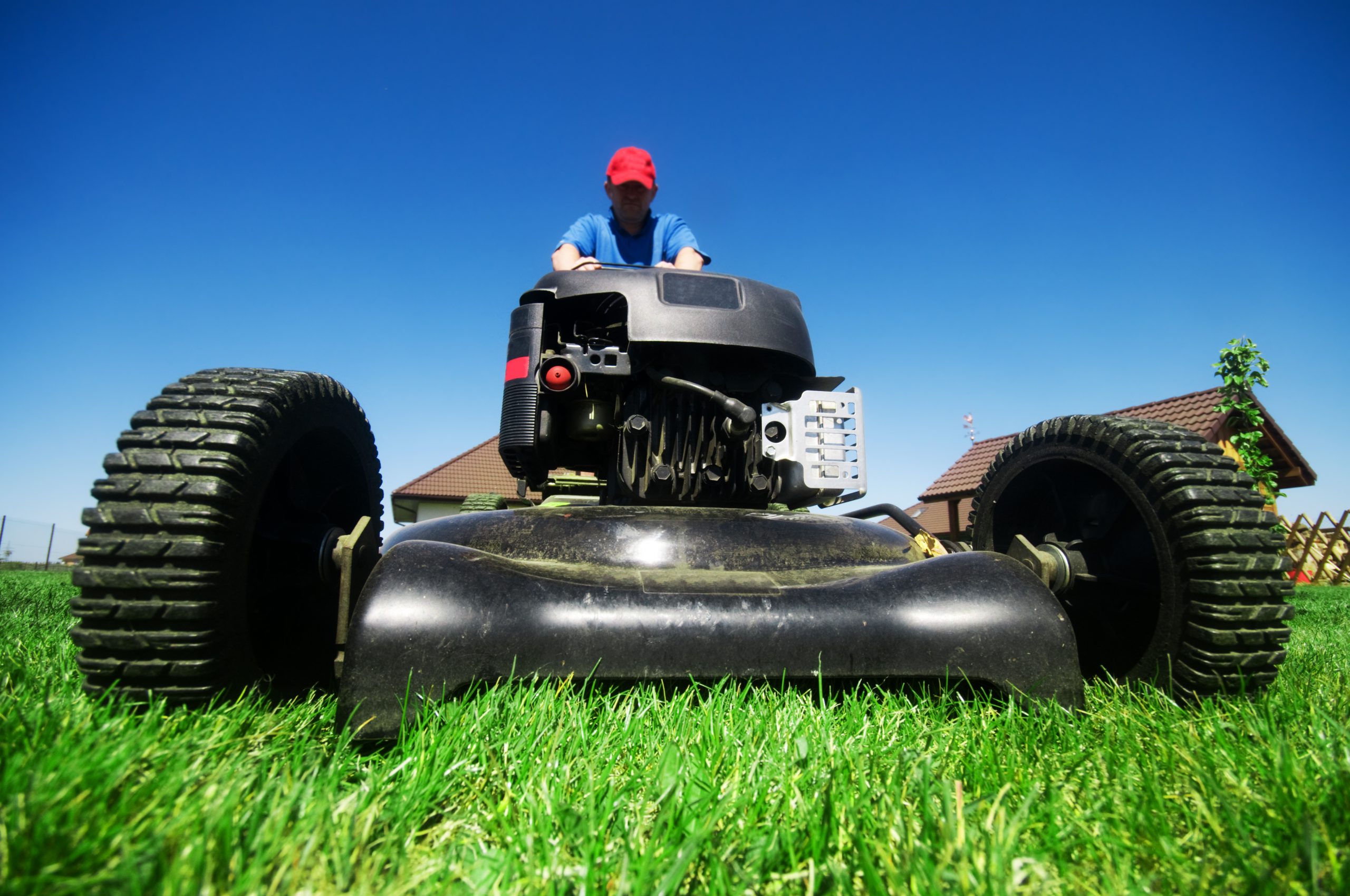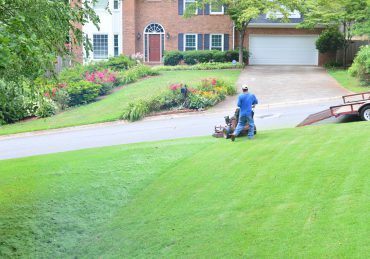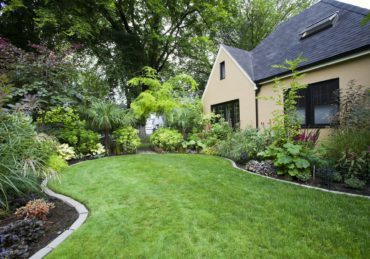Choosing the best grass seed for Indiana is essential for cultivating a healthy, resilient lawn. Indiana’s diverse climate and varying soil types mean that homeowners across the state have different lawn care needs. Northern areas tend to be cooler and wetter, while southern regions tend to be warmer and drier. This article explores the best cool-season grass seed options suited to Indiana’s conditions, helping you select the right variety based on your region. Whether you live in northern, central, or southern Indiana, understanding your local environment and choosing the proper seed blend can make all the different in achieving a lush, green lawn that thrives throughout the season.
What Is the Best Grass Seed for Indiana Lawns?
Cool-season grasses are ideal for Indiana lawns because they thrive in the state’s climate, which features cold winters, moderate springs and falls, and warm summers. These grasses growing season is during the spring and fall, allowing them to stay green and healthy when temperatures are moderate. Indiana’s USDA hardiness zones (primarily zones 5 and 6) make it an ideal environment for cool-season varieties, which are more tolerant of frost and temperature fluctuations than warm-season grasses. Popular cool-season grasses in Indiana include Kentucky bluegrass, fine fescue, tall fescue, and perennial ryegrass. These varieties are favored not only for their cold tolerance but also for their adaptability to the state’s diverse soil types and microclimates. Kentucky bluegrass is known for its dense, lush appearance, while fine fescue is drought-resistant and ideal for high-traffic lawns, and perennial ryegrass establishes quickly, making it perfect for overseeding. Together, these grass types offer flexible, reliable options for creating and maintaining a beautiful lawn across all regions of Indiana.
Cool-Season Grass vs. Warm-Season Grass
Cool-season grasses thrive in the cooler temperatures of spring and fall, making them ideal for most of Indiana, which falls within USDA hardiness zones 5 and 6. These grasses, like Kentucky bluegrass and tall fescue, stay green longer and recover well from seasonal stress. In contrast, warm-season grasses like zoysia prefer hot summer temperatures and go dormant in cooler months. While zoysia can be used in southern pockets of Indiana, it is less common statewide due to its limited cold tolerance. Overall, cool-season grasses are better suited to Indiana’s climate and are the preferred choice for most homeowners.
Best Indiana Lawn Grasses
Kentucky Bluegrass
Kentucky bluegrass is a popular cool-season grass known for its dense, lush texture and rich green color. It creates a soft, carpet-like lawn and has excellent self-repairing abilities thanks to its underground rhizomes. This makes it ideal for high-traffic areas. Kentucky bluegrass thrives in full sun and performs best when grown in well-drained soil with regular maintenance.
Tall Fescue
Tall fescue is a versatile cool-season grass valued for its tolerance to heat, drought, and shade. its deep root system allows it to access moisture during dry periods, making it highly durable and resilient. Ideal for Indiana’s varied conditions, tall fescue performs well in both sun and partial shade, offering a tough, low-maintenance lawn option for busy homeowners.
Fine Fescue
Fine fescue is an excellent choice for shaded lawns and areas with limited sunlight. Known for its fine texture and soft appearance, it thrives in cool, shaded environments where other grasses struggle. Fine fescue requires minimal mowing and fertilization, making it perfect for low-maintenance lawns. It’s an ideal solution for homeowners seeking a natural, effortless look in less sunny areas.
Perennial Ryegrass
Perennial ryegrass is prized for its quick germination and rapid establishment, making it ideal for overseeding existing lawns or repairing bare spots. It provides early green color and immediate coverage, helping to prevent soil erosion and weed growth. Often included in seed mixes, perennial ryegrass blends well with other cool-season grasses and thrives in Indiana’s transitional climate zones.
Best Grass Seed for Northern Indiana
Northern Indiana experiences colder winters and a shorter growing season compared to the rest of the state, making grass selection especially important for maintaining a healthy lawn. The region’s frequent frost, snow cover, and fluctuating spring temperatures can stress grass that isn’t adapted to these harsher conditions. As a result, cool-season grass blends are the best choice for northern Indiana homeowners. A mis of Kentucky bluegrass, fine fescue, and perennial ryegrass is highly recommended due to the complementary strength of each grass type. Kentucky bluegrass provides a dense, attractive lawn and has excellent self-repairing qualities, though it establishes slowly. Perennial ryegrass germinates quickly, offering fast coverage and early green color, which helps prevent weed invasion during the critical growth period in spring. Fine fescue adds shade tolerance and low-maintenance appeal, thriving in cooler, less sunny areas. Together, these grasses create a balanced, resilient lawn that can endure northern Indiana’s tough winters while maximizing the shorter growing season. Choosing a high-quality seed blend with these varieties ensures better year-round performance and a lawn that can withstand the region’s unique climate challenges.
Best Grass Seed for Central Indiana
Central Indiana sits in the heart of the country’s transitional zone, where both cool- and warm-season grass characteristics come into play. This region experiences a mix of hot summers, cold winters, and varying rainfall, creating a diverse climate that requires adaptable grass varieties. Additionally, many lawns in central Indiana feature a combination of sunny and shaded areas, so flexibility in grass performance is essential. For this reason, tall fescue is an excellent choice for central Indiana homeowners. It offers deep roots for better drought and heat tolerance, making it well-suited for the region’s warm, dry summers. A tall fescue blend mixed with fine fescue and perennial ryegrass adds further resilience. Fine fescue enhances shade tolerance and reduces maintenance needs, while perennial ryegrass ensures fast germination and quick establishment, ideal for overseeding or patch repair. These blended seed mixes thrive in the region’s varying conditions and provide a lush, durable lawn that stays green throughout the growing season. Selecting a high-quality mix tailored to transitional zones is key to achieving long-term health in central Indiana.
Best Grass Seed for Southern Indiana
Southern Indiana features slightly warmer temperatures and longer growing seasons than the northern parts of the state, making it important to choose grass seed that can handle more heat and occasional dry spells. Tall fescue is the top choice for this region due to its excellent heat and drought resistance, along with its deep root system that allows it to stay green and resilient even in the hooter months. Its ability to thrive in full sun and partial shade makes it well-suited for a variety of lawn conditions found throughout southern Indiana. Tall fescue also offers a dense, durable turf that can withstand foot traffic and requires less water than some other cool-season grasses. While cool-season grasses dominate the area, warm-season grasses like zoysia are sometimes used in select southern pockets, particularly where homeowners want a low-maintenance lawn that turns brown in winter but thrives in summer. However, zoysia remains less common overall due to its slower establishment and dormancy during cooler months. For most southern Indiana homeowners, a high-quality tall fescue blend is the best seed choice for long-lasting performance in the region’s climate.
Best Grass Seed for Overseeding in Indiana
Overseeding is an important lawn care practice in Indiana, typically done in early fall when temperatures are cooler and the soil is still warm, which are ideal conditions for seed germination. Homeowners overseed to patch bare spots, improve turf density, and enhance overall lawn health, especially after summer stress or heavy foot traffic. It’s also a great way to outcompete weeds and introduce more resilient grass varieties. For the best results in Indiana’s climate, consider using fast-germinating perennial ryegrass for quick growth and immediate coverage. It establishes rapidly, helping prevent erosion and weed growth. Fine fescue is another excellent choice, especially for shaded or low-maintenance areas, offering good shade tolerance and drought resistance. Blending these grasses creates a balanced lawn that responds well to fall overseeding and transitions smoothly into the next growing season with improved healthy, thickness, and appearance.
When to Plant Grass Seed in Indiana
The best time to plant grass seed in Indiana are early fall and early spring, when temperatures typically range between 50°F and 65°F, the perfect conditions for cool-season grass germination and root development. Early fall, from late August through mid-October, is the preferred time because soil is still warm, air temperatures are cooler, and weed competition is significantly reduced compared to spring. These conditions promote faster germination, stronger root growth, and better lawn establishment before winter dormancy. Early spring, from mid-March through April, is also suitable, though increased weed pressure and unpredictable weather can make it slightly less ideal. Planting during these windows helps ensure your grass gets a strong start, resulting in a healthier, more resilient lawn.
How to Choose the Best Grass Seed for Your Indiana Lawn
Choosing the best grass seed for overseeding your Indiana lawn depends on several key factors: sunlight exposure, foot traffic, shade levels, and how much maintenance you’re willing to do. For sunny, high-traffic areas, tall fescue is a durable option with strong roots and good drought tolerance. If your lawn is mostly shaded, fine fescue is ideal due to its shade tolerance and low-maintenance needs. For quick results in patchy or overseeded areas, perennial ryegrass germinates fast and blends well with other cool-season grasses. When selecting seed, read the label carefully – look for high purity (above 99%) and a germination rate of 80% or higher to ensure quality. Avoid products with weed seed or other crop content, which can introduce unwanted plants to your lawn. By matching grass type to your lawn’s conditions and reviewing seed quality, you’ll set yourself up for a healthy, vibrant lawn across Indiana’s diverse regions.
Tips for Indiana Lawn Care After Seeding
Proper post-seeding care is crucial for establishing a healthy lawn after seeding. Begin by watering lightly and frequently, two to three times a day, to keep the topsoil consistently moist until the new grass is well established. Once seedlings are about 2 inches tall, reduce watering frequency but increase depth to encourage deep root growth. Lawn mowing in Indiana after seeding should begin when the grass reaches about 3 to 4 inches, but avoid cutting it shorter than 2.5 inches, as mowing too low can stress young grass. Hold off on fertilizing until about 4 to 6 weeks after germination, using a starter fertilizer to support root development. Weed control is also important; avoid applying herbicides too early, as they can damage new seedlings. Hand-pulling is safest during early growth stages. Additional Indiana lawn care tips can be found on LawnGuru’s definitive guide to annual lawn maintenance.
Get Help Choosing the Best Grass Seed for Your Indiana Lawn
Choosing the right grass seed for your specific region in Indiana can significantly impact your lawn’s success. Climate, soil conditions, sun exposure, and seasonal changes all play a role in how well your grass grows and stays healthy. Selecting region-appropriate seed blends ensures better resilience and long-term perofrmance. For expert guidance and reliable results, consider booking with LawnGuru. Their professionals specialize in seeding, overseeding, and seasonal lawn maintenance tailored to Indiana’s diverse conditions. Whether you’re starting fresh or revitalizing an existing lawn, LawnGuru takes the guesswork out of the process. Ready to grow a greener, healthier lawn? Book your LawnGuru service today and let local lawn care experts help you achieve professional-quality results.




